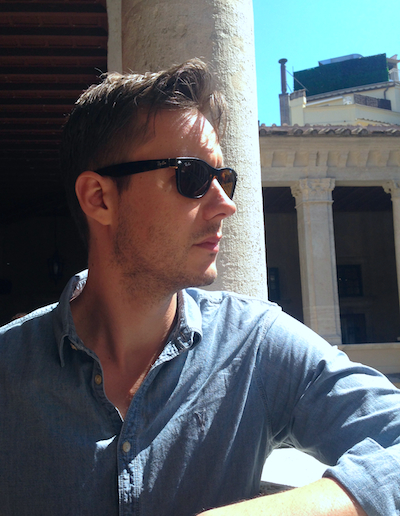Biography

Benjamin Hackbarth directs the Interdisciplinary Centre for Composition and Technology and is Head of Composition at the University of Liverpool where he lectures and writes music for instruments and electronic sound. He has a Ph.D. from the University of California, San Diego where he studied composition with Roger Reynolds and received a Master's degree while working with Chaya Czernowin. He has a bachelor's degree in composition from the Eastman School of Music.
Ben has been composer in research at IRCAM three times since 2010. He was also a composer affiliated with the Center for Research and Computing in the Arts (CRCA) and a Sonic Arts Researcher at CalIT2. He has had residencies at Cité des Arts, Centre Internationale de Récollets, Akademie Schloss Solitude and the Santa Fe Chamber Music Festival. In addition to writing concert music, he has collaborated with other artists to create multimedia installations with realtime graphics, sound and motion tracking.
Notable performances include those by the Arditti String Quartet, Ensemble InterContemporain, the New York New Music Ensemble, the L.A. Percussion Quartet, the Collage New Music Ensemble, Ensemble Orchestral Contemporain, Ensemble SurPlus, Line upon Line, and the Wet Ink Ensemble. His work has been presented in venues such as Cité de la Musique, Akademie Schloss Solitude, the MATA festival, SIGGRAPH, the Florida Electro-acoustic Music Festival, the Santa Fe Chamber Music Festival, the Ingenuity Festival, E-Werk, the Pelt Gallery, the San Diego Museum of Art, the Los Angeles Municipal Art Gallery, the Roulette Concert Space and Espace de Projection at IRCAM. Ben's music can be heard on CD releases by the Carrier Records and EMF labels.
In addition to writing music, Ben does methodological research. He co-authored and maintains a widely-used creative tool for concatenative sound synthesis called audioGuide and is currently working on novel MIR visualisation techniques to afford high-level compositional control of mosaicing. He also works with microprocessors to create wireless, low-latency controllers for performers (e.g. Decryption in Three Parts).